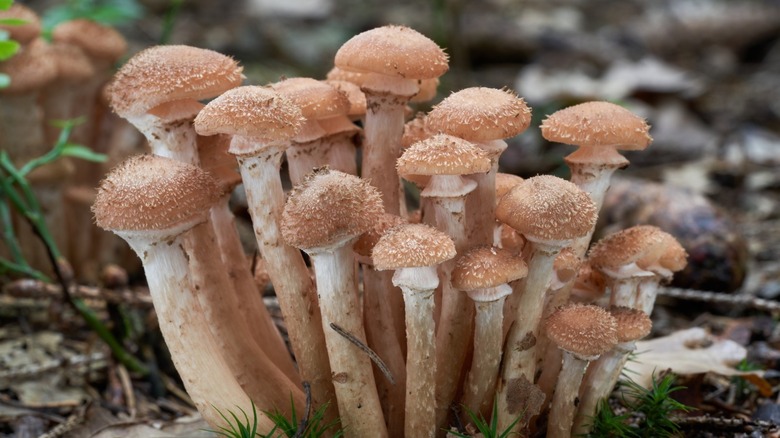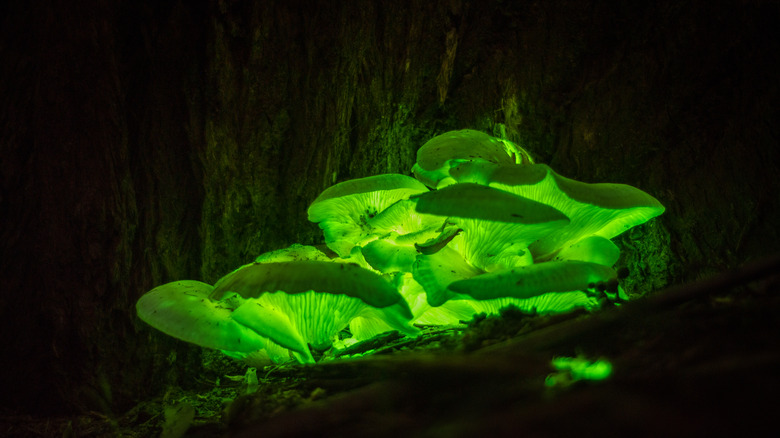You May Not Want To Eat Mushrooms After Reading This
In overexcited science news, the discovery that parts of a mushroom system fire electrical spikes in a manner similar to languages spoken by humans has transformed into The New York Post's headline "Mushrooms Can Talk." A study that was published in the journal Royal Society Open Science examined the patterns made by the electrical spikes in the mycelia of four types of mushrooms. The mycelium is the root-like part of a fungus. "We do not know if there is a direct relationship between spiking patterns in fungi and human speech. Possibly not," Professor Andrew Adamatzky of the University of West England told The Guardian.
However, the spikes form up to fifty well-defined trains that appear to serve a purpose. In other words – well – words. Moreover, they fire at average lengths similar to English or Russian. So, interpreting mushroom electrical activity through the lens of language could help scientists understand how fungal systems work. Perhaps it will also make people worry that their stuffed mushrooms get soggy from crying silently as they beg not to be eaten. Or what if mushrooms shriek "no!" before they're turned into a pizza topping?
Still, more studies are needed before we can claim that mushrooms can talk. Even with further study, though, it may be hard to stretch an anthropomorphic view of the phenomenon. And even then, as Professor Adamatzky admits "There is also another option – they are saying nothing."
You might not want to eat some of these mushrooms anyway
The four types of mushrooms examined in the study are the ghost mushroom, the enoki, the split gill mushroom, and the caterpillar mushroom. Even if biting into a fungus that is pleading for mercy doesn't bother you, for one reason or another you might not want to try them.
The enoki, of course, is fine. The University of Illinois Press goes as far as to say that the entire species of Flammulina velutipes, of which the Japanese enoki is the most cultivated member, is fine to eat. However, the less cultivated types are tougher to bite into and resemble the deadly poisonous Galerina autumnalis. The caterpillar mushroom, or Cordyceps Militaris, is also edible, according to Forager Chef. You might not want to eat it, though, if you're squeamish about the fact that it spreads by taking over the minds and bodies of insects in a "zombie-like" fashion.
Ultimate Mushroom notes that despite European and American decision to call the split gill or Schizophyllum commune inedible, you can in fact eat it. The site says this decision "is apparently due to differing standards of taste rather than known toxicity, being regarded with little culinary interest due to its tough texture." It's eaten in Mexico, for example. The only mushroom that is truly toxic, as opposed to unappetizing, is the ghost mushroom. The glow-in-the-dark Omphalotus nidiformis resembles oyster mushrooms, except it is indeed toxic (per The Conversation).

